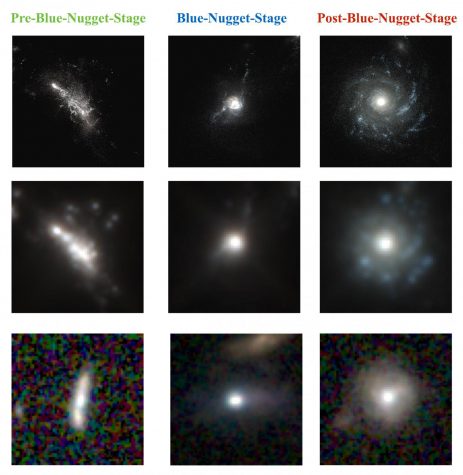Artificial Intelligence in Astronomy
May 8, 2018
A group of astronomers has recently developed a deep learning algorithm in order to successfully classify different galactic phases. The research groups were able to obtain data from an N-body simulation, as well as images from Hubble Space Telescope, in order to input a matrix of galaxy images. The series of algorithms were proven to be extremely accurate, showing researchers across the world how Artificial Intelligence can be used in the fields of astronomy, mathematics, chemistry, and biology.
Have you ever wondered how FaceLock is able to open your phone with just a scan of your face? Have you also ever wondered how Snapchat can identify faces to create filters? The underlying concept behind these seemingly magical features is caused by a process called deep learning. Deep learning, also known as neural networks, is considered “artificial brains” that are capable of learning multiple concepts. Some as easy as identifying numbers, to as complex as predicting space debris and orbital paths. Using the percentage error given from a line of code, also known as the “cost function,” the machine is able to adapt in order to become more and more precise. Deep learning is sort of like artificial scientists that are capable of analyzing complex work with large numbers of datasets.
So how can this be applied specifically to astronomy? The capabilities of machine learning in astronomy are endless, and AI has only been recently used ever since large amounts of data have been transferred into computers. This AI galaxy recognition is one of the few existing deep learning methods that has been implemented in astronomy, and it’s not as simple as it looks. The scientists inputted a large matrix of galaxies at different stages and imaging qualities in order to successfully identify the certain phase of a specific galaxy. The astronomers had to use N-body simulations, which are highly advanced simulations that can predict different astronomical scenarios, in order to create the highest quality of galaxy imaging in the matrix. Using the different arrays of images for each galactic phase, the researchers were able to create a supervised learning algorithm.
Although deep learning can seem like just a bunch of complex code, there are a lot of underlying calculus and linear-algebra involved. You can know ten different coding languages, but you won’t be able to learn machine learning without knowing the math. Machine learning, in simplest terms, is a series of algorithms that can learn and adapt to data without being completely programmed. Machine learning is also called neural networks since the neurons in our brain use multiple layers of analysis in order to do a certain task. For example, when you look at a number, your brain takes multiple steps to identify that certain number. Machines are able to do this as fast, if not faster than a normal human can.
So you may be wondering, can these machines turn against us? Not necessarily. You may think about the Terminator when someone mentions the word robots, but AI in the real world is nothing like it appears on television. Artificial Intelligence is code to do one task, and one task only. Everything else the AI is unable to do. A more considerable problem with AI is the loss of jobs in the future. Jobs that relate to analyzing data are at high risk of losing jobs, and even jobs that involve differentiating certain data points are at high risk as well.
With the advancement in technology, arduous tasks in the fields of science can now be analyzed using just a few lines of codes. Whether if it’s with imaging classification, or even making statistical data predictions, the field of astronomy is getting greatly enhanced with the help of machine learning.
















































































































































